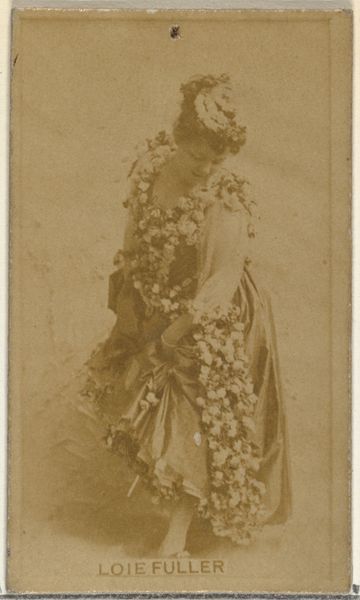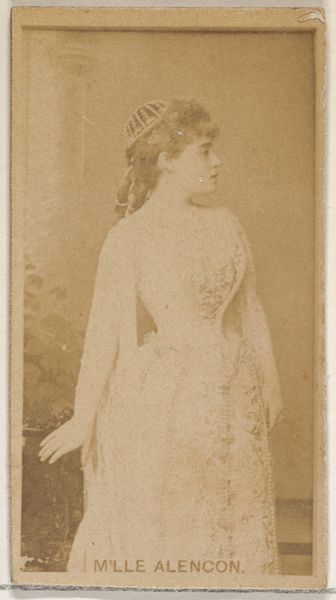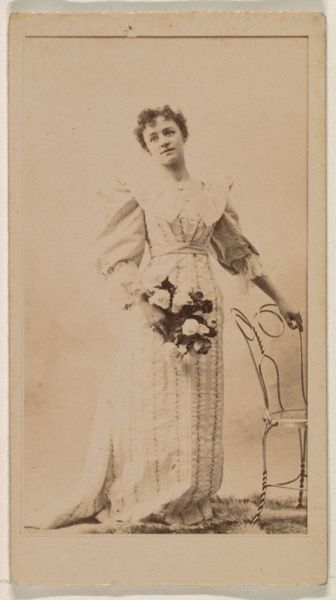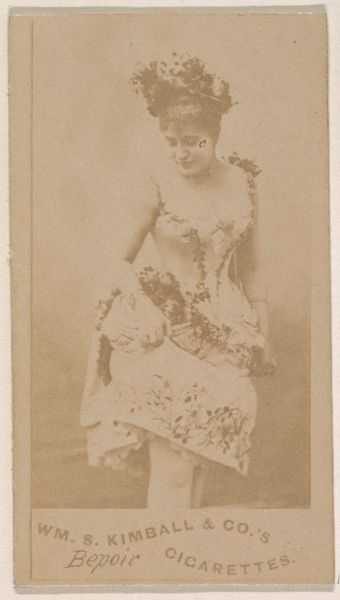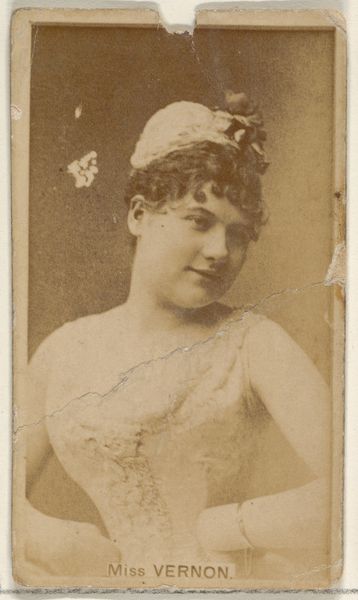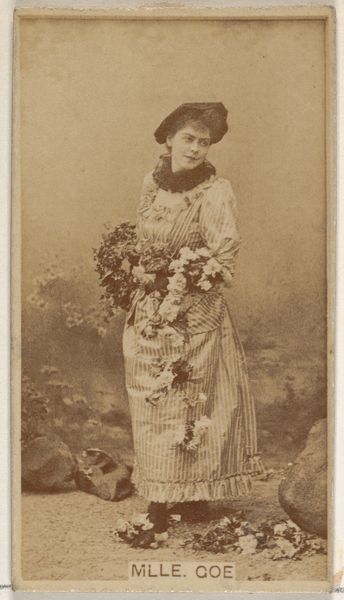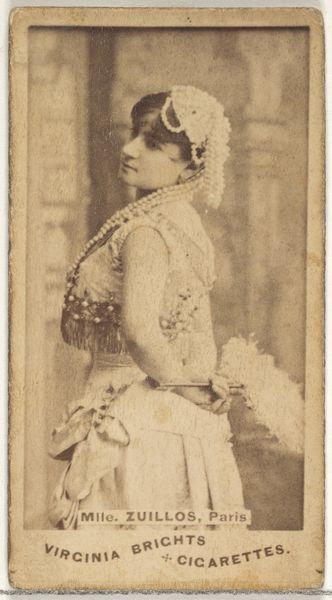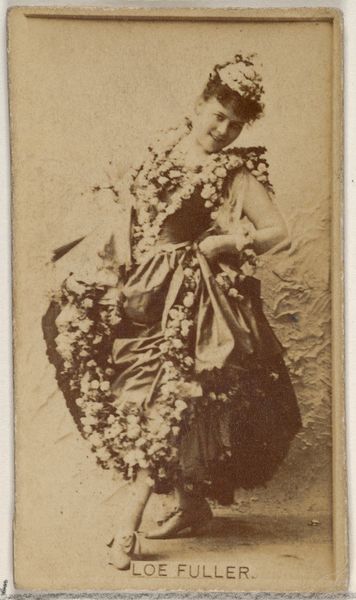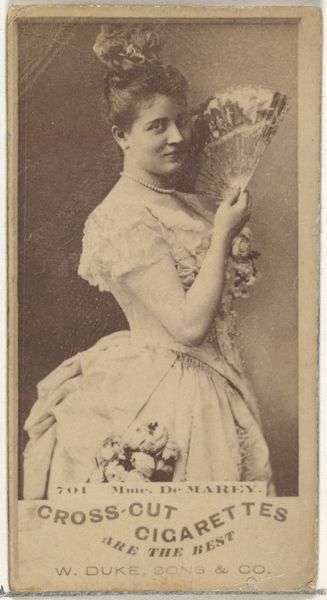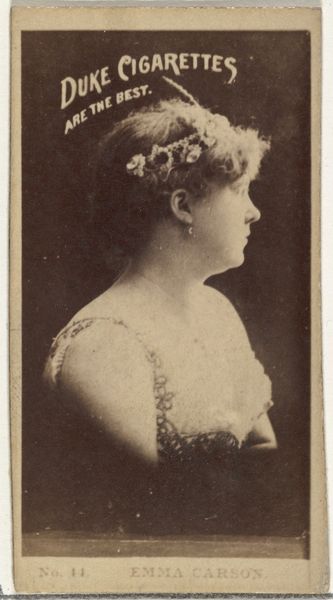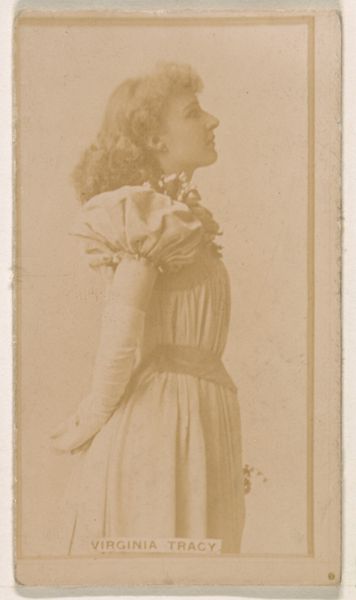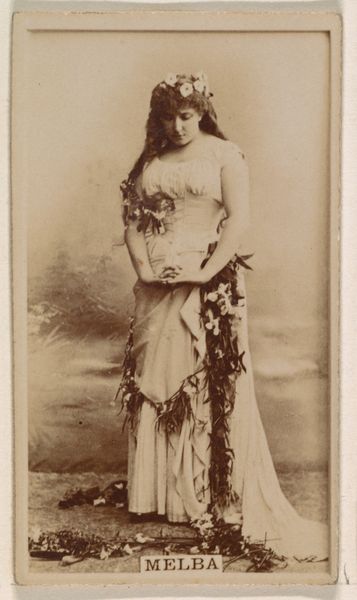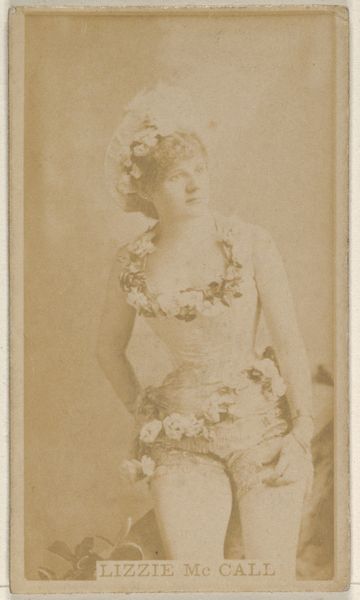
Loie Fuller, from the Actors and Actresses series (N145-8) issued by Duke Sons & Co. to promote Duke Cigarettes 1890 - 1895
0:00
0:00
print, photography
#
portrait
# print
#
charcoal drawing
#
photography
#
charcoal
Dimensions: Sheet: 2 11/16 × 1 3/8 in. (6.8 × 3.5 cm)
Copyright: Public Domain
Curator: Here we have a promotional cigarette card, dating from between 1890 and 1895. The card is part of the Actors and Actresses series issued by Duke Sons & Co. and it features Loie Fuller, the famous American dancer. Editor: It's incredibly striking. The sepia tones lend it a real sense of nostalgia. The floral decorations and Loie Fuller's gaze create a sense of ethereal beauty and almost otherworldly femininity. Curator: These cards were incredibly popular; they offered consumers an accessible introduction to contemporary celebrities and trends. This particular one speaks volumes about the public's fascination with stage performers like Fuller, and, by extension, the cultural power of early celebrity endorsements. Editor: Absolutely. Fuller was more than just a dancer. She was a pioneer, especially in her innovative use of lighting and fabric. To see her captured here, essentially as a commodity to sell cigarettes, does invite questions about how her image was being controlled and consumed at the time. She was very interested in technology, in electricity… this mass reproduction flattens that out into something quite different. Curator: That tension is at the heart of understanding this. While Fuller undoubtedly benefited from increased public recognition, the representation flattened and commodified her artistic vision. One could say the photograph creates a specific visual language of celebrity—the gaze, the idealized beauty, the carefully constructed persona. Editor: It definitely raises questions about agency and the artist’s ability to control their image in an emerging mass media landscape. Even her elaborate costumes become secondary; she’s selling an aspiration more than artistry itself. It really does seem symptomatic of the male gaze inherent in this era, casting Fuller as an object of beauty to fuel commerce. Curator: By understanding the context of its production and distribution, these small cards really become tools to understand broad societal changes regarding advertising, entertainment, and the construction of identity. They also act as artifacts, telling the tale of societal values and attitudes. Editor: Agreed. Something as seemingly simple as a cigarette card provides a powerful lens through which we can examine gender, class, and power dynamics at the turn of the century. It leaves us reflecting on representation, then and now, and who gets to shape the narrative.
Comments
No comments
Be the first to comment and join the conversation on the ultimate creative platform.
